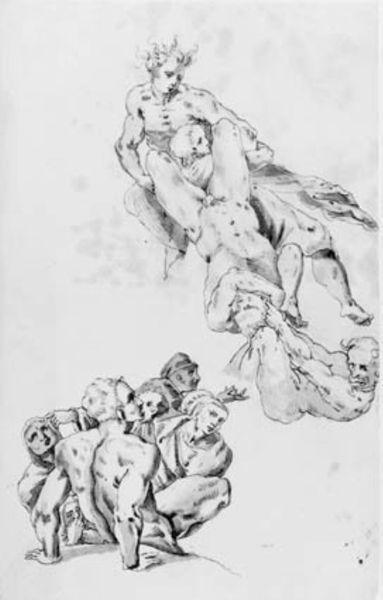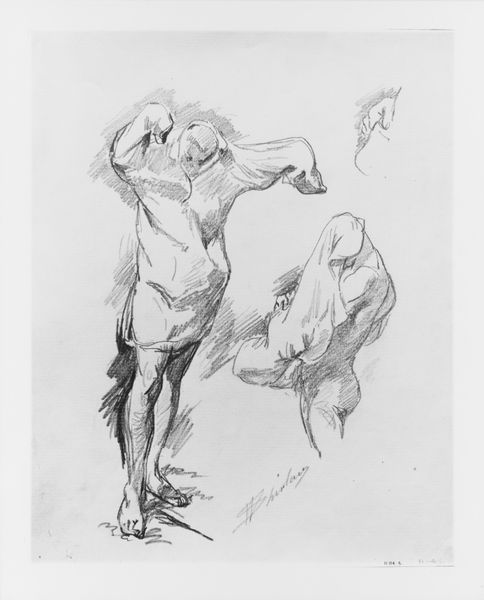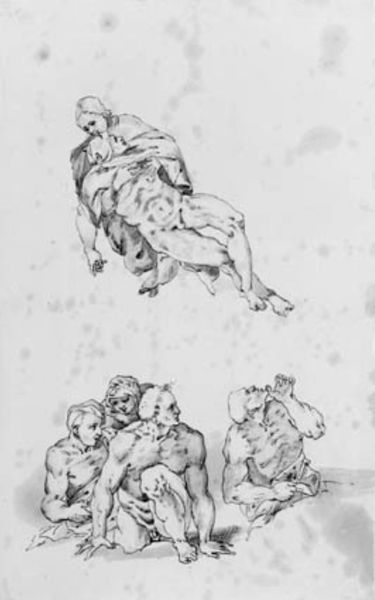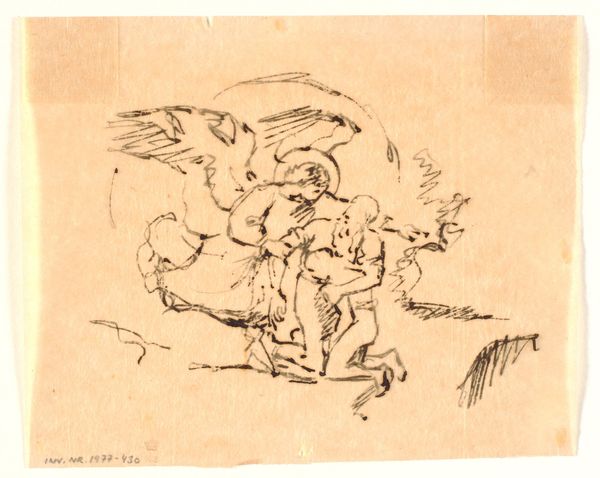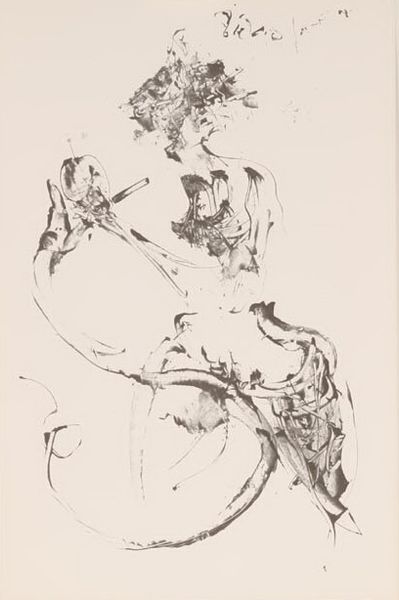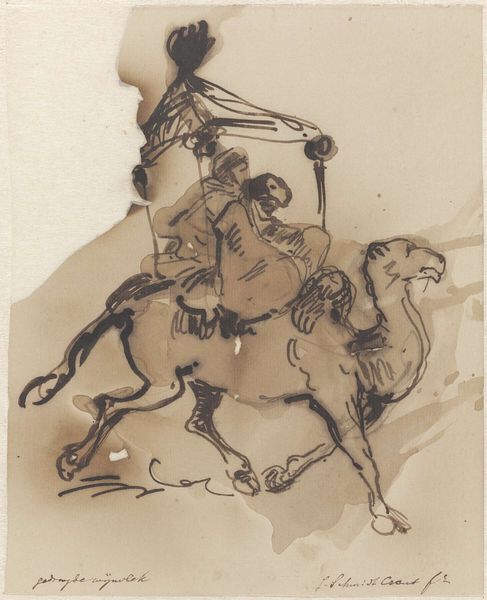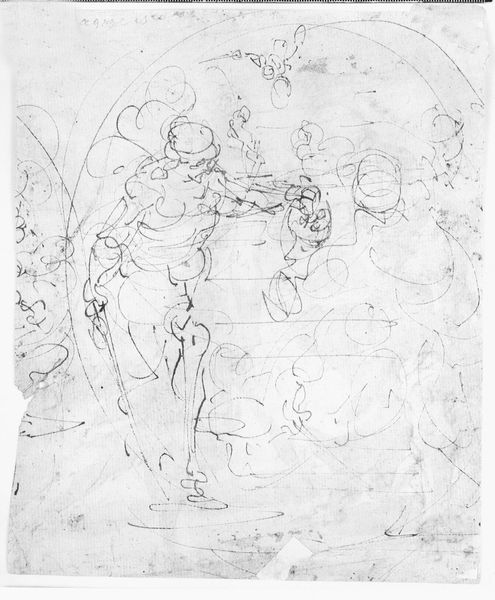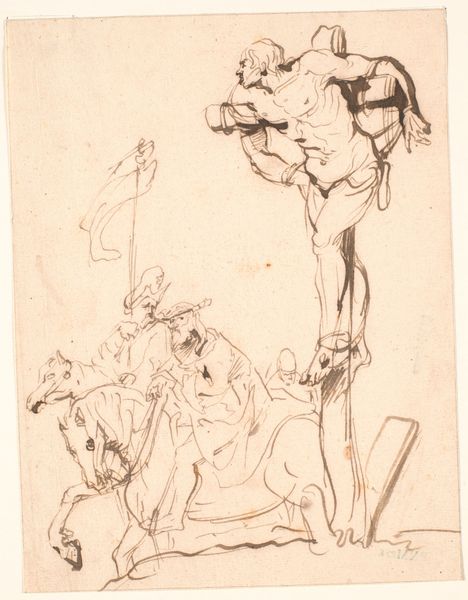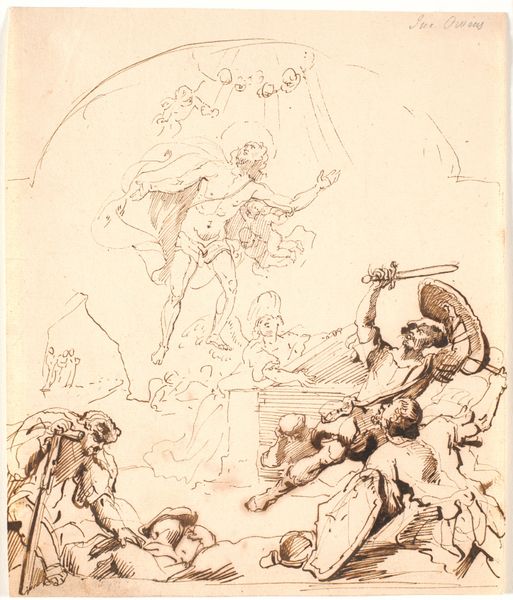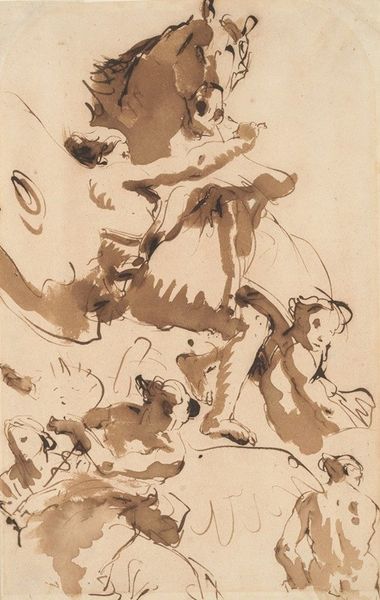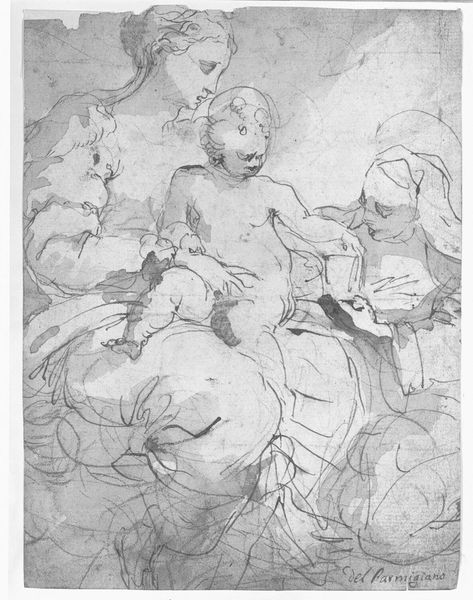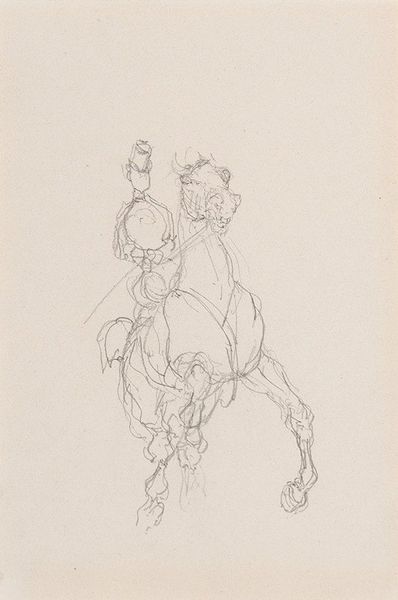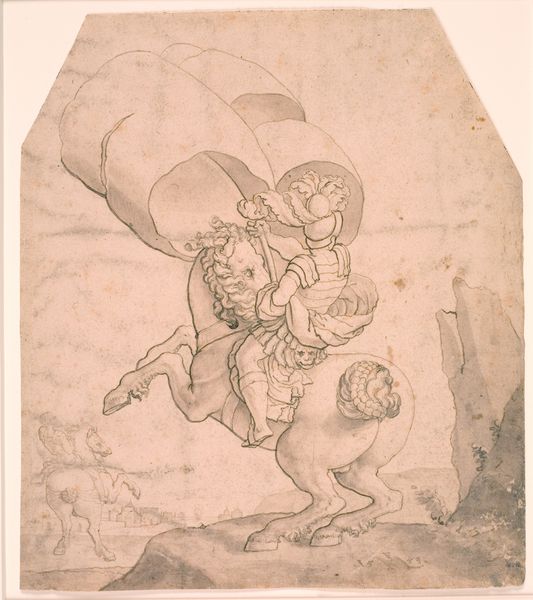
Ascending male nudes from the Last Judgement, Sistine Chapel 18th century
0:00
0:00
drawing
#
drawing
#
figuration
#
11_renaissance
#
line
#
history-painting
#
nude
Dimensions: 326 mm (height) x 200 mm (width) (bladmaal)
Editor: This drawing, titled *Ascending male nudes from the Last Judgement, Sistine Chapel*, is attributed to an anonymous artist, and is believed to have been created sometime in the 18th century. Executed as a drawing, it seems to be preparatory work related to Michelangelo's famed fresco. The ascending figures give me a sense of dramatic movement. What are your thoughts on it? Curator: The first thing that strikes me is how this drawing, seemingly a study for the *Last Judgement*, exists in a cultural and political landscape very different from when Michelangelo painted the Sistine Chapel. Think about it - the 18th century marked a rise in academic art and a systematized study of the "Old Masters". Copying Michelangelo's work would have been an exercise in artistic training, to internalize the ideals of Renaissance art and the construction of the male nude. Why do you think these ascending figures are being emphasized by the artist who copied the work? Editor: Perhaps they are trying to capture the essence of divine ascension? To idealize and somewhat study the perfect body and show a physical rise toward God and heaven. It is such an idealized depiction, with its almost hyper-defined musculature. Curator: Exactly. And that very act of copying raises some interesting questions, doesn't it? Who was allowed to access these images? How did its public reception change over those centuries, when the social status of images were always dependent on their physical locations in galleries or churches and their function within political power. Considering how often it’s copied now in popular media, do you think the symbolism has changed? Editor: That’s fascinating. I suppose the contemporary symbolism is more diluted, removed from its intense religious context, though still connected to Renaissance notions of masculine beauty and the human potential of artists to convey intense narratives with imagery. Thanks so much, I’ll need to consider the social landscape’s part in art a lot more from now on.
Comments
No comments
Be the first to comment and join the conversation on the ultimate creative platform.
